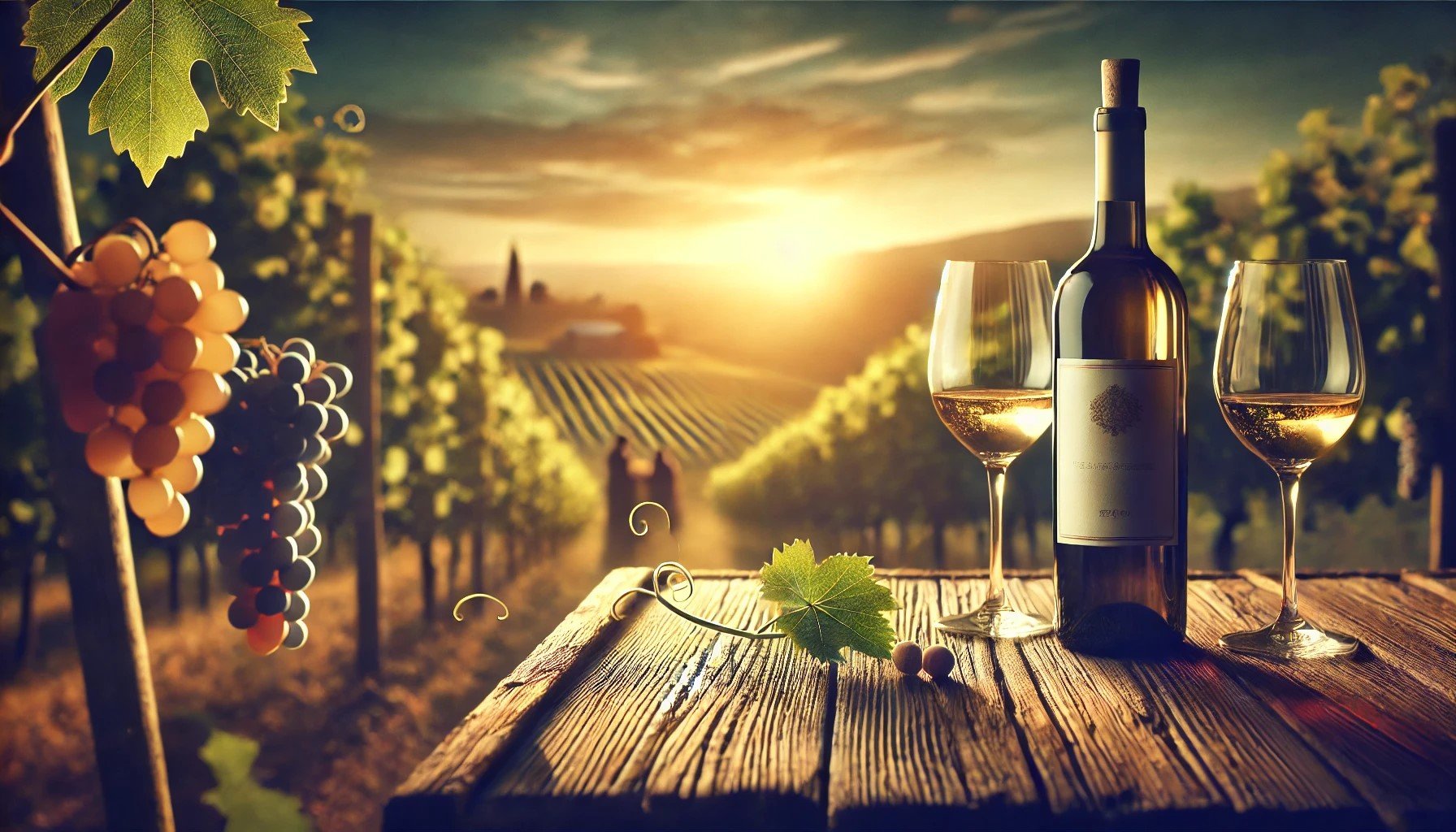Message in a Bottle: In Wine is the Truth, Tell your through Strategic Copywriting
AI-generated illustration.
Customized and engaging copy and content is as important for the wine industry as is for any other industry. Do it right and your brand will stick out, do it wrong and you’ll get lost in the noise. Through properly implemented copy and content strategy, you can add an extra memorable experience that will be right there with your already excellent wine. Basically, put a name to the face.
In this blog, we’ll be discussing the different ways of doing this, regardless of which stage of operation your winery is in. In vino veritas- let’s tell your wine’s truth.
Every vineyard has a story
Let’s be honest, we are all suckers for a good story. And every vineyard and winery has a story to tell. And by every, I mean every. What do I mean by that, you’ll say.
Well, first of all, start with the inception. How did you get the idea? What were you inspired by? Was it a mutual dream with your loved one? Did you inherit it from your parents or a relative? People love listening to a good story, especially with a glass of wine from your vineyard in their hand, that they can connect to. What other beverage is more iconic, to listen to or to tell a story with, than wine?
It would be great if you could incorporate this story into your brand’s name or even the wine label. All the best wine brands did it. Regardless if you are a wine connoisseur or a beginner, you probably know the stories behind the names of brands such as Veuve Clicquot, Dom Pérignon, Franciscan, or Lion Head.
But your story doesn’t end with this. Where is the vineyard located? Maybe it’s a historic location, or you were a pioneer on that site. Next, what kind of microclimates influence it, when do you pick your grapes, and how do you pick your grapes? How do you crush them, what kind of barrels are you using to age the wine?
A carefully curated story can make your targeted audience fall in love with your wine before they even have their first sip. Personally, I could read wine stories all day long. But maybe it’s just me.
Go beyond the tasting notes
Serious wine drinkers and professionals in the industry will tell you that wines usually have three levels of aromas and flavors that generally evolve over the course of their lives.
But maybe someone who’s at the beginning of their wine journey won’t be able to understand that. On top of that wine experience can be subjective at times.
Your wine is more than just ‘mineral, open, and showing notes of tropical fruit’. Would you recommend it for a girls’ night out, or maybe it’s more suitable for a ‘Netflix and Chill’ evening? What kind of food would you recommend to go with it?
Language is evolving and so are ways to describe wine. There are already new generations of sommeliers that have a different approach to describing wine.
Effective copy and content should resonate with all audiences, no matter where they are on their wine journey.
Your online presence is more than just a shopping cart
Building an online presence is crucial for building a brand that is going to attract new visitors, and keep on making loyal fans returning without huge investments in advertisement.
How you ask. Through carefully crafted copy and content, where you are going to educate your customers through blogs, newsletters, and social media posts. Topics can vary from the quality of the vintage, obstacles the winery/vineyard had to face, weather during the harvest time, etc. If I start describing all the things you can talk about this blog won’t be long enough.
But I do have bad news for you. Just a simple, solitary page with all your wines listed, devoid of any description and extra information the visitor might want to know, simply won’t do it. You need to do more.
Your wine story can be your sales booster
We already concluded that your story is unique. The next step is to leverage that to drive sales. Visitors that piqued interest in your story can be your potential buyers. Through carefully curated newsletters, engaging product descriptions, and even storytelling-based sales funnels you can turn the curious visitor into a buyer.
Sell the experience, not just the time and place
As a former bartender, I have attended many wine dinners and wine-tasting events. And nothing annoyed me more than a flier, poster, or a social media post for a said event with just the time and place on it, and occasionally the price.
Promotional material for such an event should be a preview of the tasting room experience, including but not limited to:
Whether food will be provided and if dietary restrictions can be accommodated
The featured wineries and wine regions
The number of courses offered
Any special guest speakers or sommeliers present
By providing this information you can build up excitement and anticipation while avoiding misunderstandings, ensuring potential attendees’ maximum enjoyment.
Uncork your story with strategic copywriting
Your story is as essential as your best vintage. Through targeted content, you can not only communicate the unique essence of your wine but also educate and engage your audience at every stage of their journey.
Let your words flow freely as the wine in your glass. Invest in compelling copy that resonates with your audience, builds anticipation for your events, and turns casual visitors into loyal fans. The truth in wine is not just what it is in the bottle, it’s also about the stories that surround it.
